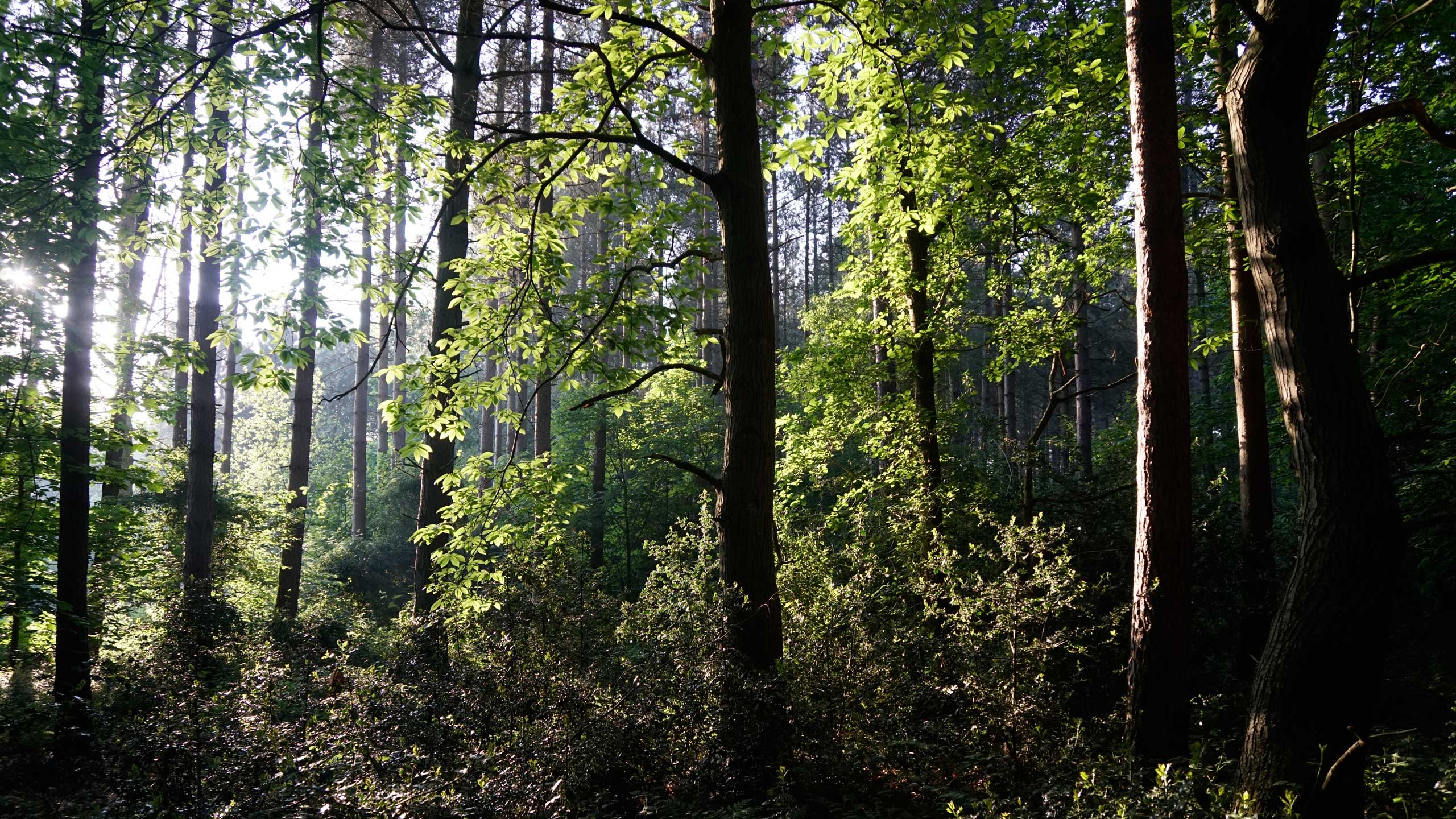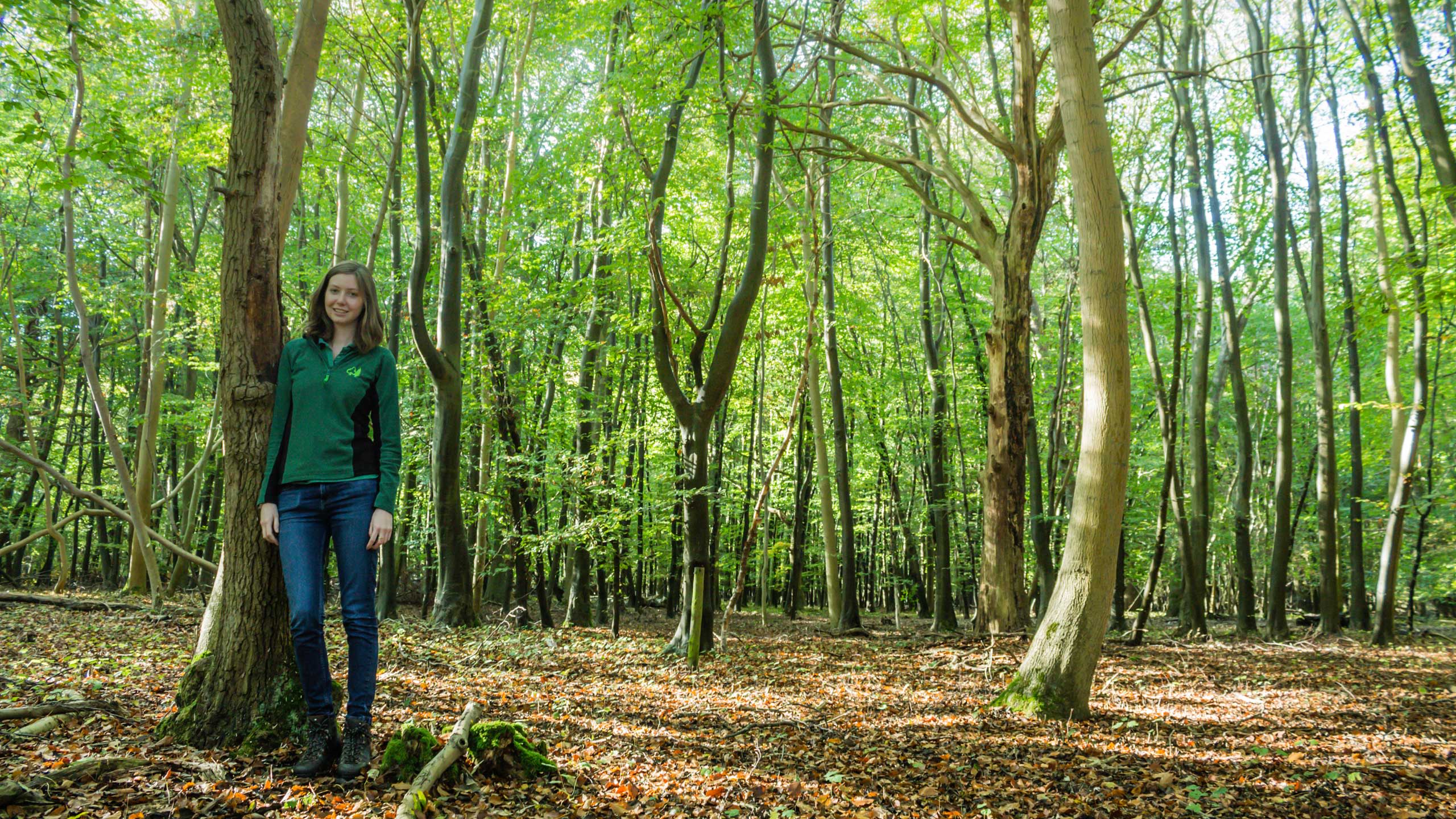Future-proofing a forest
Faced with shifting demands on landscapes and a changing climate, how do you plan for a forest’s future?

Thetford Forest is a unique 47,000-acre landscape straddling the border of Norfolk and Suffolk in the East of England. Cambridge Universityʼs Eleanor Tew is helping the Forestry Commission plan for the next 100 years of its life.
The patchwork of pines, heathland and broadleaf trees that make up Thetford Forest has been carefully managed since its beginnings nearly a century ago, when the Forestry Commission was tasked by the UK government with reforesting a nation depleted by the demands of the First World War. Today, the Forest is prized for the value of its timber and its biodiversity, and attracts a million-plus visitors every year.
But modern forestry faces new challenges. “Around a third of global forests are managed for timber production, but these forests also play a vital role in helping to look after the planet’s biodiversity, water, soil and carbon,” says PhD student Eleanor Tew (pictured), who works with Professor William Sutherland in the Universityʼs Department of Zoology.
“Management strategies are increasingly looking to balance the economic needs of forestry with the maintenance of resilient and functioning ecosystems.”
All these goods and benefits – its ‘ecosystem services’ – need to be considered by the Forestry Commission when it designs strategies for the nation’s forests. And, because trees take so long to grow, these strategies need to be ‘future-proofed’ for up to 100 years so that trees planted now will continue to thrive and be of benefit to future generations.
Eleanor has been examining over 40 different management options in Thetford Forest with the Commission, who sponsor her research alongside the Natural Environment Research Council (NERC). For each option, she looks at its impact on up to nine different ecosystem services: timber production, carbon sequestration, water supply, soil quality, recreation, scenic beauty, heritage values, wildlife and conservation.
“Different management options often lead to trade-offs between different ecosystem services,” she explains. “So a conifer monoculture might give you excellent timber production but lower recreational benefit, whereas a mixed broadleaf forest might be relatively low on timber but high on biodiversity.”
“Intelligent planning against an uncertain future needs both accurate evidence and informed insight,” says the Forestry Commission’s Jonathan Spencer, Head of Planning and Environment. “This research is providing us with both.”
“Eleanor's research is leading to a better understanding of management options, and how we can maximise the various benefits in decades to come.”
Planning a century ahead becomes an even greater challenge with climate change, as Eleanor explains: “The warming climate brings more pests and more diseases, which can slow or stop growth, or kill trees entirely.
“Forestry monocultures and broadleaf woodlands are being affected all over Europe. Just in terms of timber, if you think of a forest as a bank account and the tree’s growth as its interest, then planting the wrong species for the climate at the end of the century risks considerable loss in value when that tree is harvested.”
Thatʼs why diverse management strategies are currently being explored, she says. Understanding the effects of these options is imperative, and needs to be detailed if it is to increase ‘natural capital’ resilience.
“One of the great aspects about working with the Forestry Commission is having access not only to their databases of management strategies and timber projections, but most importantly also to their staff with their wealth of expertise and experience,” adds Eleanor, who has been working closely with Thetford’s Planning team.
“Together, we’ve been able to ensure that my research is as applicable and helpful as possible by focusing on the range of management strategies under consideration for the future of the forest.
“But I also needed to get into the realms of understanding the difference between planting one tree species or another in different locations – which meant gathering new evidence, such as over 600 soil samples from across the forest.”
She now aims to embed her research by working full time at the Forestry Commission for three months after her PhD, thanks to NERC funding through the National Productivity Investment Fund, which is linked to the government’s Industrial Strategy.
“The UK government increasingly recognises the need to maintain and enhance the nation’s natural capital,” adds Tristram Hilborn, Forest Management Director in the East England Forest District. “The UK forestry sector has a crucial role in this, which is why this sort of research – which informs evidence-based planning – is so important.”
Eleanor will soon begin summarising her results for the Forestry Commission, helping them to make decisions on a case-by-case basis, putting theory into practice. This could include deciding what species to plant or what management strategy to adopt in a new planting area.
“Eleanor’s work has challenged us to think more deeply and to act more wisely as we face up to the threats to forests arising from climate change and the opportunities of enhancing the wider ecosystem services we provide,” adds Spencer. “We have no doubt that similar studies will be pursued in other forests, as her work comes to fruition and is adopted across the country.”

Read more about Cambridge University research in the East of England in a special issue of Research Horizons magazine.

